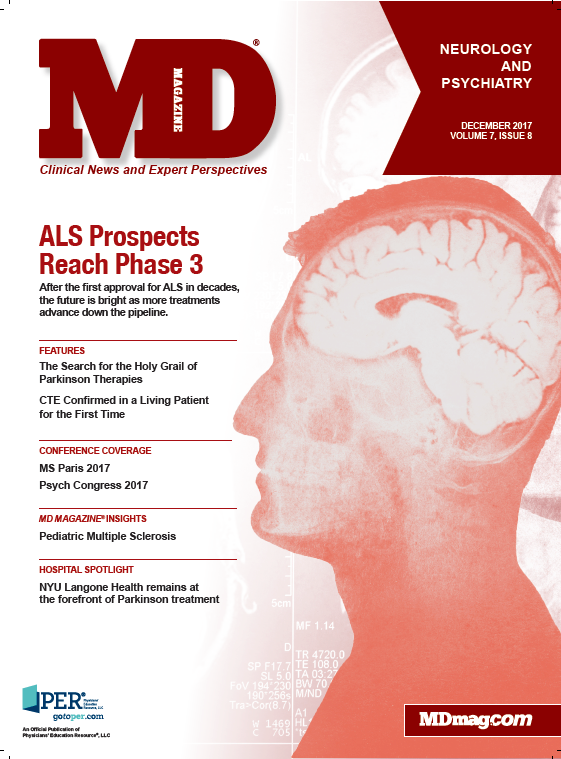What Is Known and What Is Needed in Pediatric Multiple Sclerosis
Brenda L. Banwell, MD, chief of the Neurology Division at the Children’s Hospital of Philadelphia, in Pennsylvania is dedicated to making life as easy as possible for patients with pediatric multiple sclerosis (MS). The disease, which takes relapsing form in most young patients, can affect schoolwork, stress levels, physical activity, and overall quality of life. In a discussion with MD Magazine®, Banwell shared the latest findings in pediatric MS, how doctors can best help patients, and what more needs to be done to adequately treat this debilitating condition.
DIAGNOSING PEDIATRIC MS
Primary progressive MS (PPMS) is possible but not prevalent in pediatric patients. In fact, Banwell said she has never diagnosed that form of the neurological disease. Relapsing-remitting MS (RRMS), the more prevalent form in pediatric patients, is also associated with a slightly higher relapse rate than in adults, she said. As a result, the day-to-day experiences associated with RRMS—poorer vision or ability to walk, an ataxic gait, and loss of bladder control—are amplified in children and adolescents.
“You can imagine, [for] a 15-yearold, what that could be like,” Banwell said. “So treating every relapse matters.”
IMAGING INDICATIONS
Recent developments in imaging have shed light on the condition, including the important realization that pediatric patients with MS have smaller brains and skulls compared with age- and sex-matched healthy children, Banwell said.
“[This suggests that] something has probably been happening for some time, even before that first attack, and even if they’re only 5 [years old],” she said. The “compelling” slowed brain-growth rate documented in children with MS leads to brain atrophy by the mid-teens, she said. About one-third of her patients with MS suffer from cognitive impairment, which correlates with brain volume loss.
A relationship between cognitive performance and thalamic volume in pediatric patients has also been observed. “This suggests that while, traditionally, we’ve thought about multiple sclerosis as a disease with an inflammatory beginning and a degenerative second half, pediatric patients indicate that maybe some of that degenerate biology is present as early as we can measure it,” Banwell said. This discovery also carries implications for adults with MS and emphasizes the need to prevent degeneration, strengthen control of inflammatory response, and increase neuroprotection, she said.
“It's informative to the MS field as a whole—it’s not just what’s relevant to children,” Banwell said. “The fact that brain degeneration might start very early in MS is a compelling piece of evidence that’s relevant to adult MS, as well.”
UNDERSTANDING PATIENT FATIGUE
Through functional imaging, investigators have gained a stronger understanding of brain activity in children with MS. When performing certain tasks, these children show more activity in key areas of the brain, compared with healthy children of the same age, Banwell said. “This suggests that for everything they are doing, their brain is working maybe just a little harder,” she said. “Potentially, that might correlate with the fatigue they describe, and it might correlate with the struggles they have in school, particularly with multitasking and acquiring multiple rapid pieces of clinical information at once.”
Pediatric patients with MS are also at a greater risk of ataxia than adult patients, Banwell said. She encouraged MS care providers to become pediatric MS experts themselves and consult with a pediatric MS center to better understand symptom management. “We [must] think of some of the subtle safety features that not everybody would necessarily know about but really do need to be monitored,” she said.
THE BEST-CASE SCENARIO
Banwell emphasized that she does not want to paint an entirely bleak picture. Most of her adolescent patients succeed in school and engage in the same activities that healthy teenagers do, she said. Pediatric patients with MS also show fewer physical disabilities compared with adult patients. “So the message isn't all negative,” she said. “My patients would look well if you saw them.”
Formal trials for pediatric patients with MS continue to evolve, Banwell said, but current data show that children do well on commonly recommended therapies. “Relapses are suppressed well in children, which suggests the inflammatory part of the disease for them is fairly responsive to treatment in many, many of our children,” she said. “Early treatment really helps control the disease at the time when you have that window of opportunity.”
Banwell advocated that parallel to the increasing efficacy of treatments, the complexities of treating MS are growing—in all patients of every age. “The medicines that we’re using are becoming increasingly powerful, and with that power comes an increase in responsibility to understand the risks,” she said.
Watch Brenda Banwell, MD, discuss pediatric multiple sclerosis at http://mdmag.com/link/1755.
For more extensive coverage pertaining to multiple sclerosis, check out MD Magazine's sister site, NeurologyLive. The Clinical Focus page serves as a resource for articles, videos, and newly released data from the field’s most attended conferences.
